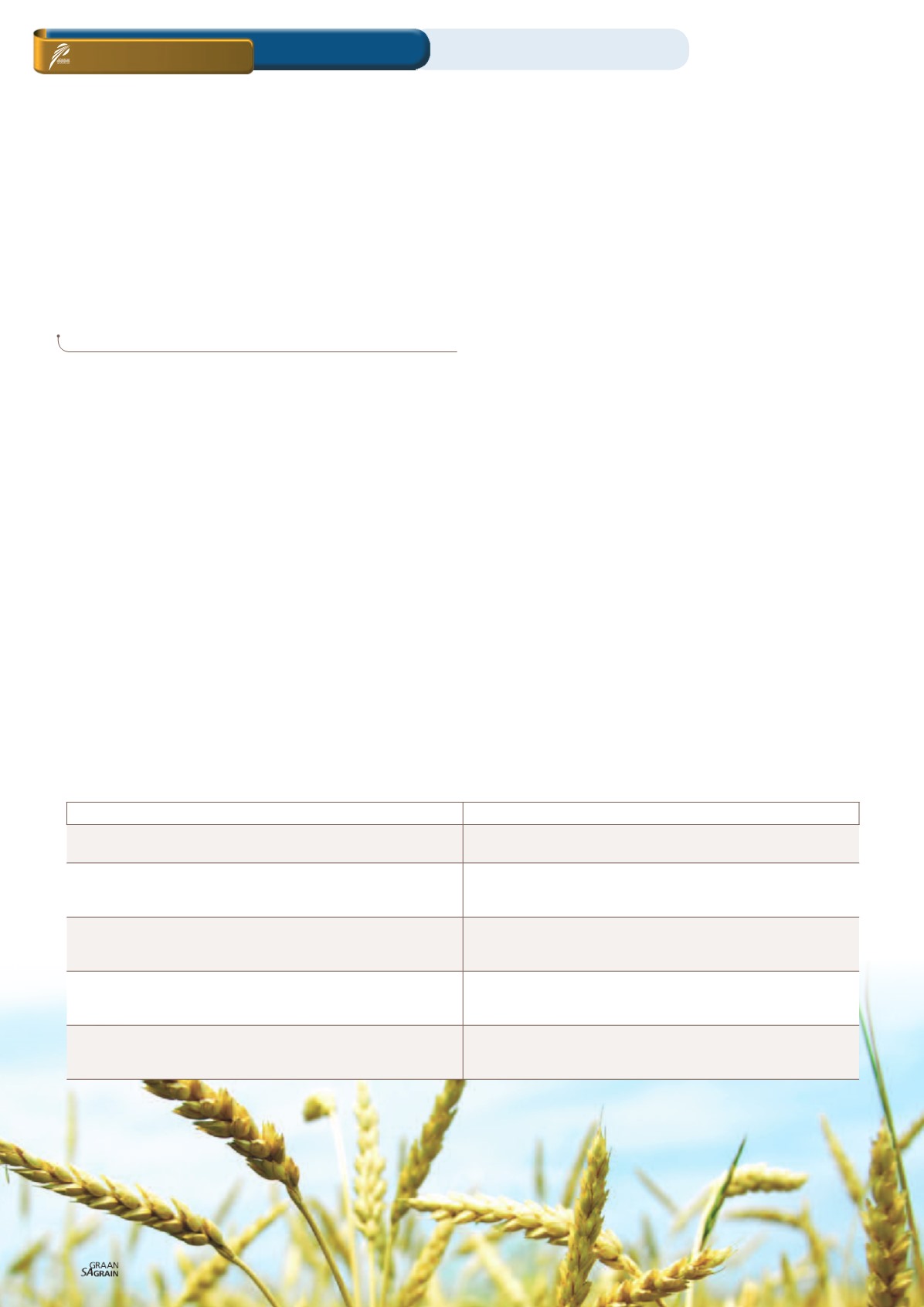

Augustus 2018
94
Wheat turnaround strategy:
Value for producers?
I
n the last four years Grain SA worked
hard in bringing changes to the wheat
industry in order to make it more sus
tainable for local wheat producers. In
April, an article was published in
SA Graan/
Grain
explaining the progress as well
as the challenges with the current turna-
round strategy.
It is no illusion that wheat producers are
under tremendous financial pressure and
that the sustainability of wheat production
is diminishing. The droughts of the past few
years fast-tracked and amplified this dimin-
ishing sustainability. Several of the produc-
ers and industry role-players are under the
impression that these changes have not had
a substantial impact on the local producers’
financial position.
Various economists, myself included, were
under the impression that if the Western
Cape region produced below the demand
of ± 600 000 tons the problem of an over-
supply (regional export status) would be
solved or at least be reflected in pricing
and premiums offered to producers. Dur-
ing the past season though, the drought
facilitated this process and less than
600 000 tons were produced, with very
little effect on prices.
We were wrong, mainly because we un-
derestimated the effect of the imbalance of
market power and the impact of imports.
This emphasised the importance of the
turnaround strategy; therefore Grain SA
asked the Bureau for Food and Agricultural
Policy (BFAP) to investigate the possible
impact of the turnaround strategy and the
benefits it might hold.
One of the greatest concerns within the
wheat industry is that the local producers
produce some of the best quality wheat
in the world, but they don’t receive prices
suitable for this superior quality. The prices
received are more suitable for imported
Russian wheat (comparative level of protein,
but of lower quality) and not that of hard
red winter wheat (comparative quantity
and more or less the same quality of wheat
produced locally).
How do you address this problem? You
change the grading regulation to accom-
modate quantity in accordance with that
of imports. This is only quantity in terms of
protein content, which can be managed by
means of production practices. Millers and
bakers are more concerned about quality in
terms of intrinsic values; in layman’s terms
the quality of the protein.
Secondly you need to increase the wheat
yield. Protein quality (intrinsic values) and
yield are negatively correlated. Therefore,
the higher the quality, the lower the yields.
This means that we need to breed new cul-
tivars to increase yield. This, however, is
a timeous process.
On farm level
Wheat / Quality / Yield improvement
Sustainability
Dr Dirk Strydom,
manager: Grain Economy and Marketing, Grain SA
SCENARIO
ASSUMPTIONS
Baseline
Existing production approach – produce higher protein content
with the objective to produce B1 quality wheat (12% protein)
Scenario 1: Produce standard B2 wheat
– 20 kg less nitrogen requirement
Change production approach to produce standard B2 quality wheat
(less 1% protein to 11% average) – scenario assumes that between
10 kg - 20 kg less nitrogen is applied per hectare
Scenario 2: Less protein – higher yield of 5%
Standard B2 quality approach (SCN1) – less 20 kg of nitrogen per
hectare – scenario further assumes that new wheat seed varieties
will lead to an increase in yield of 5%
Scenario 3: Less protein – higher yield of 10%
Standard B2 quality approach (SCN1) – less 20 kg of nitrogen per
hectare – scenario further assumes that new wheat seed varieties
will lead to an increase in yield of 10%
Scenario 4: Less protein – higher yield of 20%
Standard B2 quality approach (SCN1) – less 20 kg of nitrogen per
hectare – scenario further assumes that new wheat seed varieties
will lead to an increase in yield of 20%
Table 1: Scenario of a change in quality and yield improvement.
















